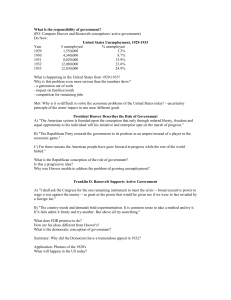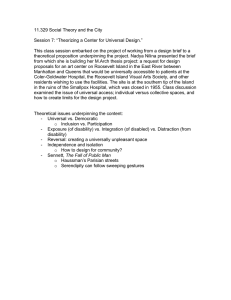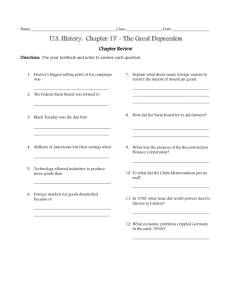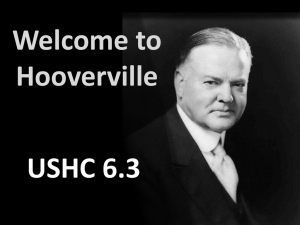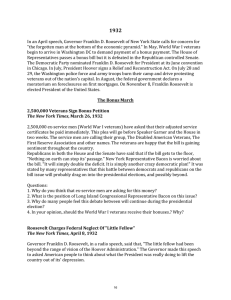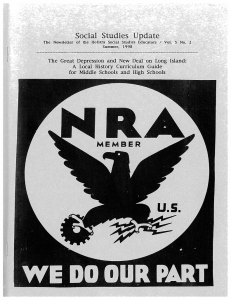Long Island and the 1932 Presidental Election
advertisement
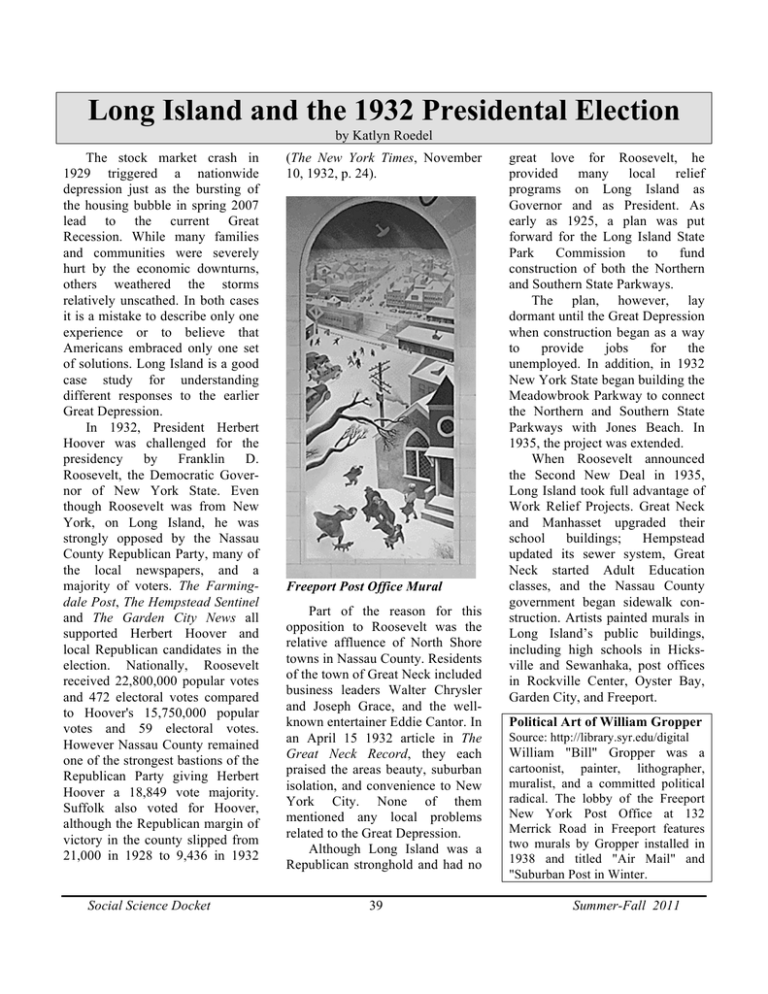
Long Island and the 1932 Presidental Election by Katlyn Roedel The stock market crash in 1929 triggered a nationwide depression just as the bursting of the housing bubble in spring 2007 lead to the current Great Recession. While many families and communities were severely hurt by the economic downturns, others weathered the storms relatively unscathed. In both cases it is a mistake to describe only one experience or to believe that Americans embraced only one set of solutions. Long Island is a good case study for understanding different responses to the earlier Great Depression. In 1932, President Herbert Hoover was challenged for the presidency by Franklin D. Roosevelt, the Democratic Governor of New York State. Even though Roosevelt was from New York, on Long Island, he was strongly opposed by the Nassau County Republican Party, many of the local newspapers, and a majority of voters. The Farmingdale Post, The Hempstead Sentinel and The Garden City News all supported Herbert Hoover and local Republican candidates in the election. Nationally, Roosevelt received 22,800,000 popular votes and 472 electoral votes compared to Hoover's 15,750,000 popular votes and 59 electoral votes. However Nassau County remained one of the strongest bastions of the Republican Party giving Herbert Hoover a 18,849 vote majority. Suffolk also voted for Hoover, although the Republican margin of victory in the county slipped from 21,000 in 1928 to 9,436 in 1932 Social Science Docket (The New York Times, November 10, 1932, p. 24). Freeport Post Office Mural Part of the reason for this opposition to Roosevelt was the relative affluence of North Shore towns in Nassau County. Residents of the town of Great Neck included business leaders Walter Chrysler and Joseph Grace, and the wellknown entertainer Eddie Cantor. In an April 15 1932 article in The Great Neck Record, they each praised the areas beauty, suburban isolation, and convenience to New York City. None of them mentioned any local problems related to the Great Depression. Although Long Island was a Republican stronghold and had no 39 great love for Roosevelt, he provided many local relief programs on Long Island as Governor and as President. As early as 1925, a plan was put forward for the Long Island State Park Commission to fund construction of both the Northern and Southern State Parkways. The plan, however, lay dormant until the Great Depression when construction began as a way to provide jobs for the unemployed. In addition, in 1932 New York State began building the Meadowbrook Parkway to connect the Northern and Southern State Parkways with Jones Beach. In 1935, the project was extended. When Roosevelt announced the Second New Deal in 1935, Long Island took full advantage of Work Relief Projects. Great Neck and Manhasset upgraded their school buildings; Hempstead updated its sewer system, Great Neck started Adult Education classes, and the Nassau County government began sidewalk construction. Artists painted murals in Long Island’s public buildings, including high schools in Hicksville and Sewanhaka, post offices in Rockville Center, Oyster Bay, Garden City, and Freeport. Political Art of William Gropper Source: http://library.syr.edu/digital William "Bill" Gropper was a cartoonist, painter, lithographer, muralist, and a committed political radical. The lobby of the Freeport New York Post Office at 132 Merrick Road in Freeport features two murals by Gropper installed in 1938 and titled "Air Mail" and "Suburban Post in Winter. Summer-Fall 2011

